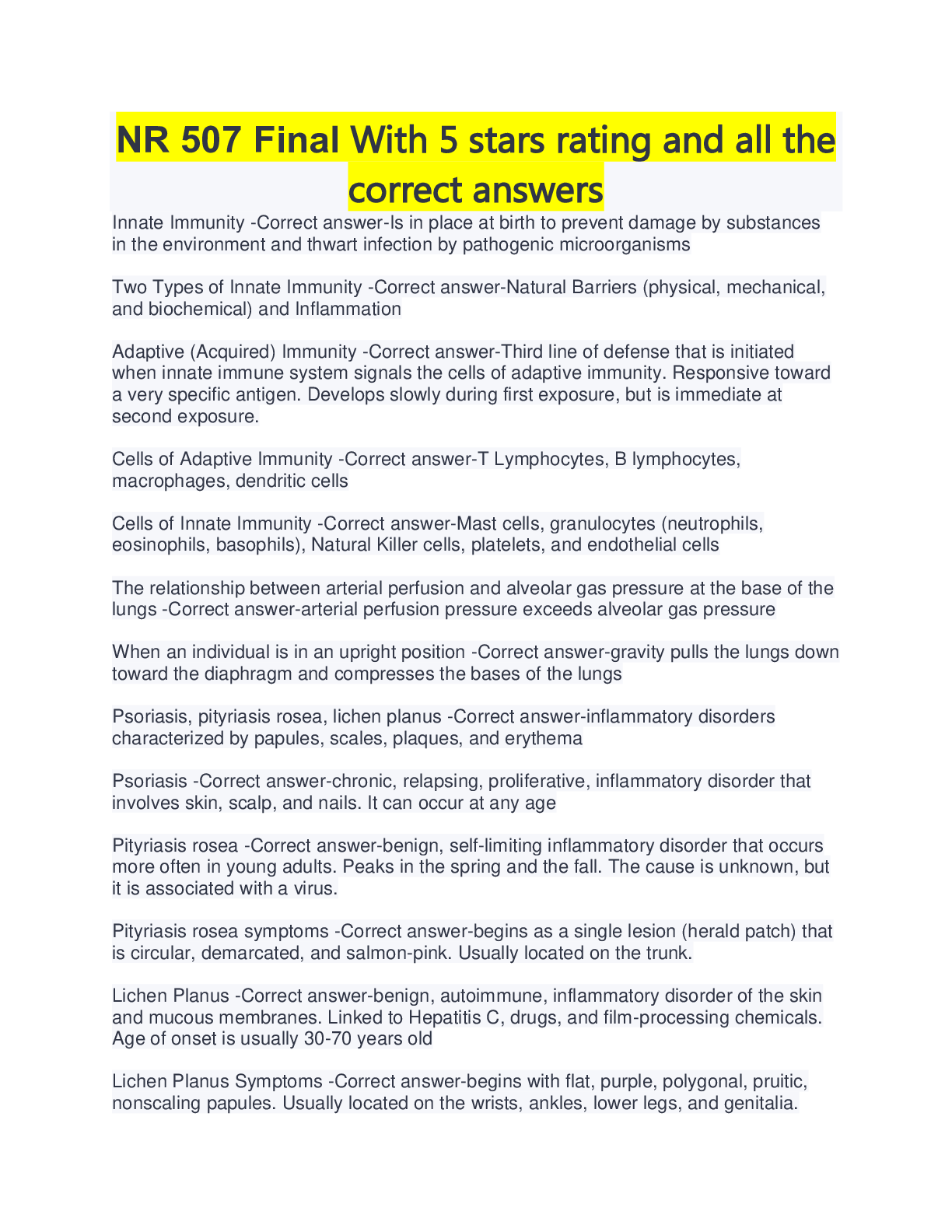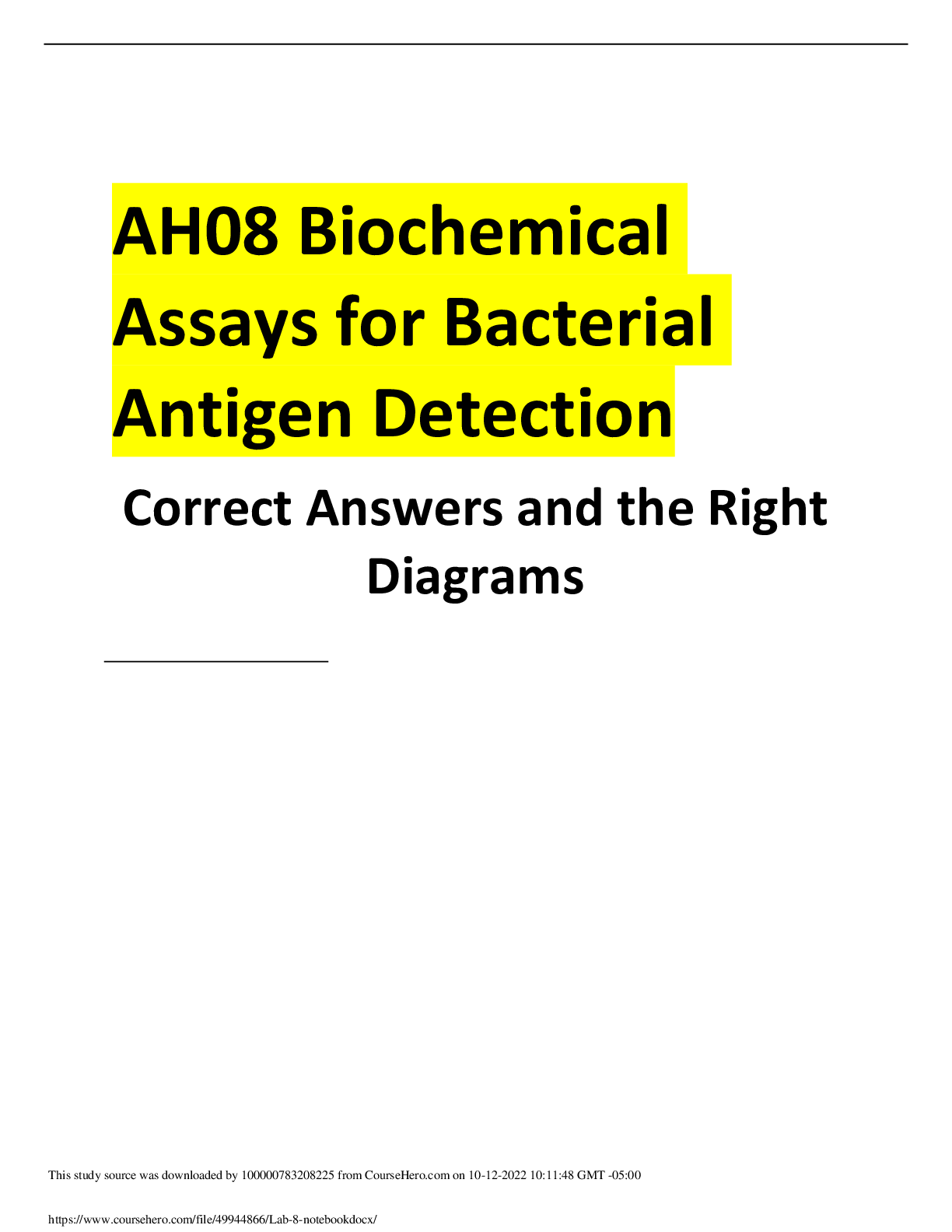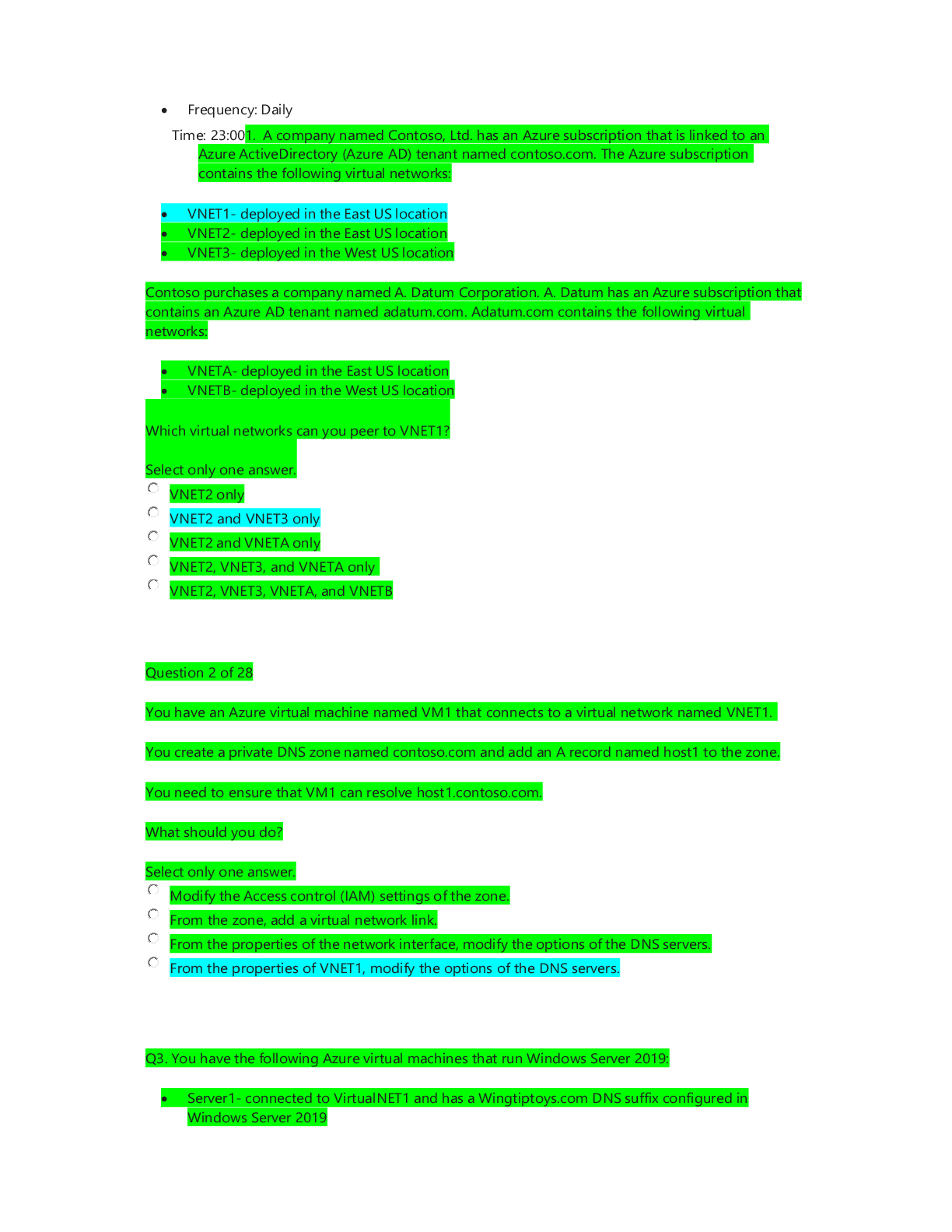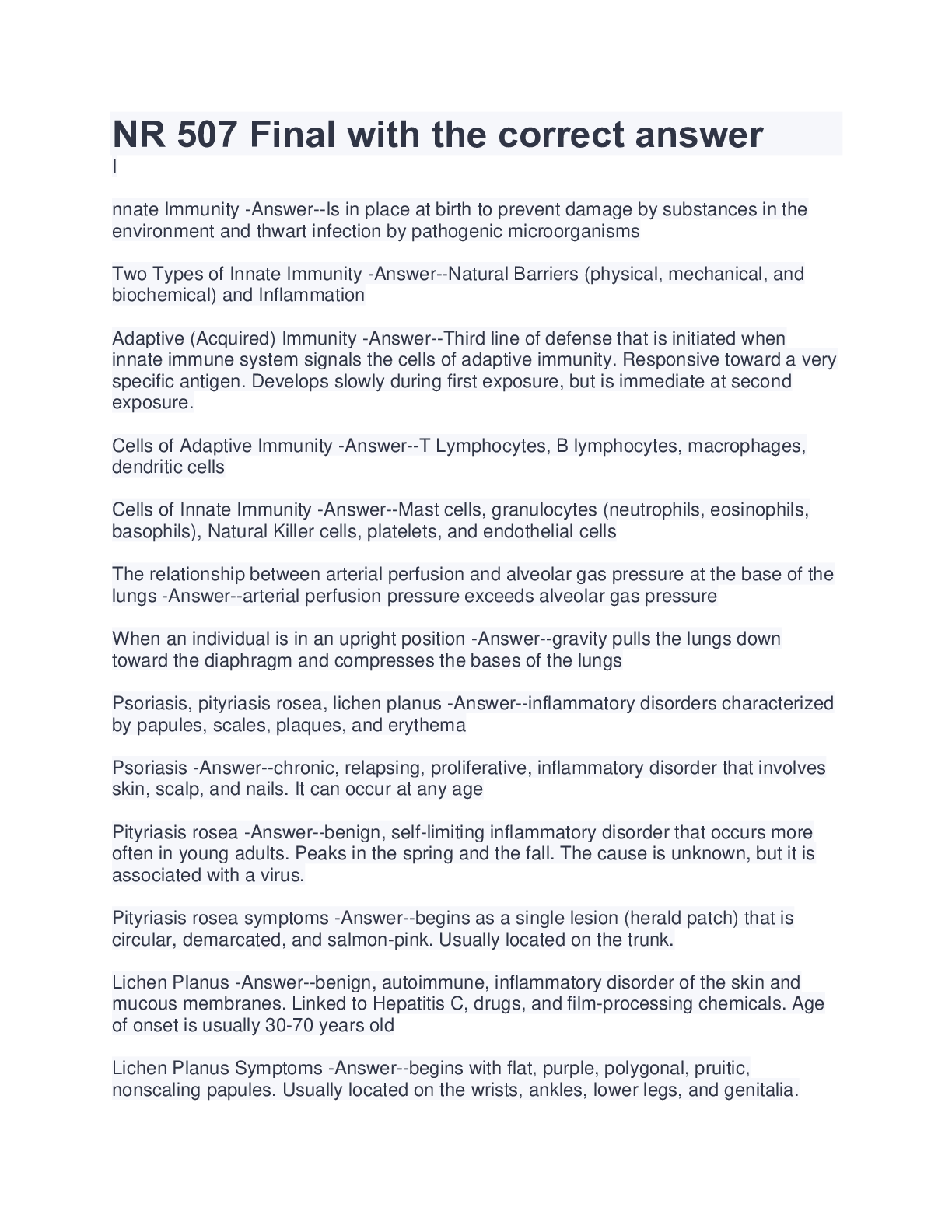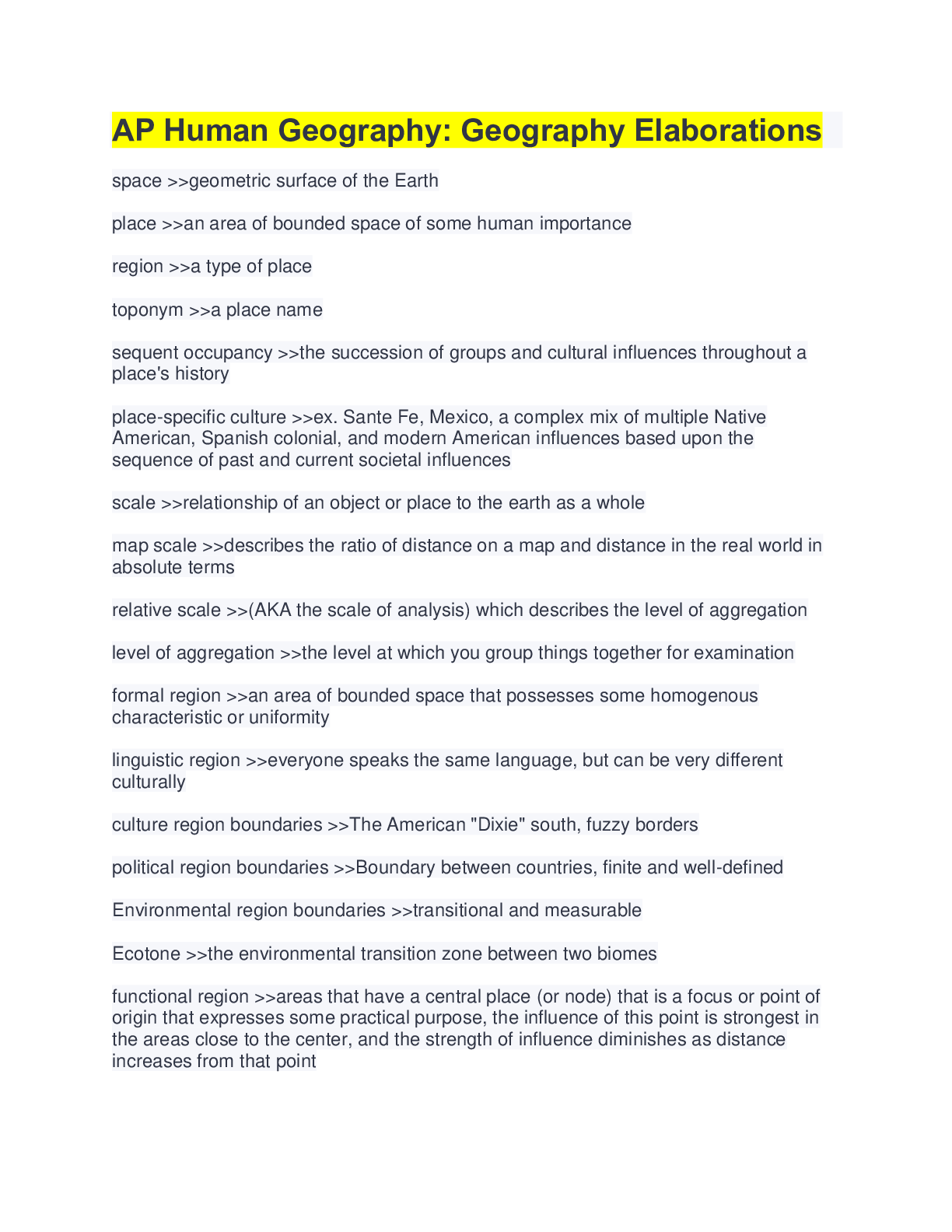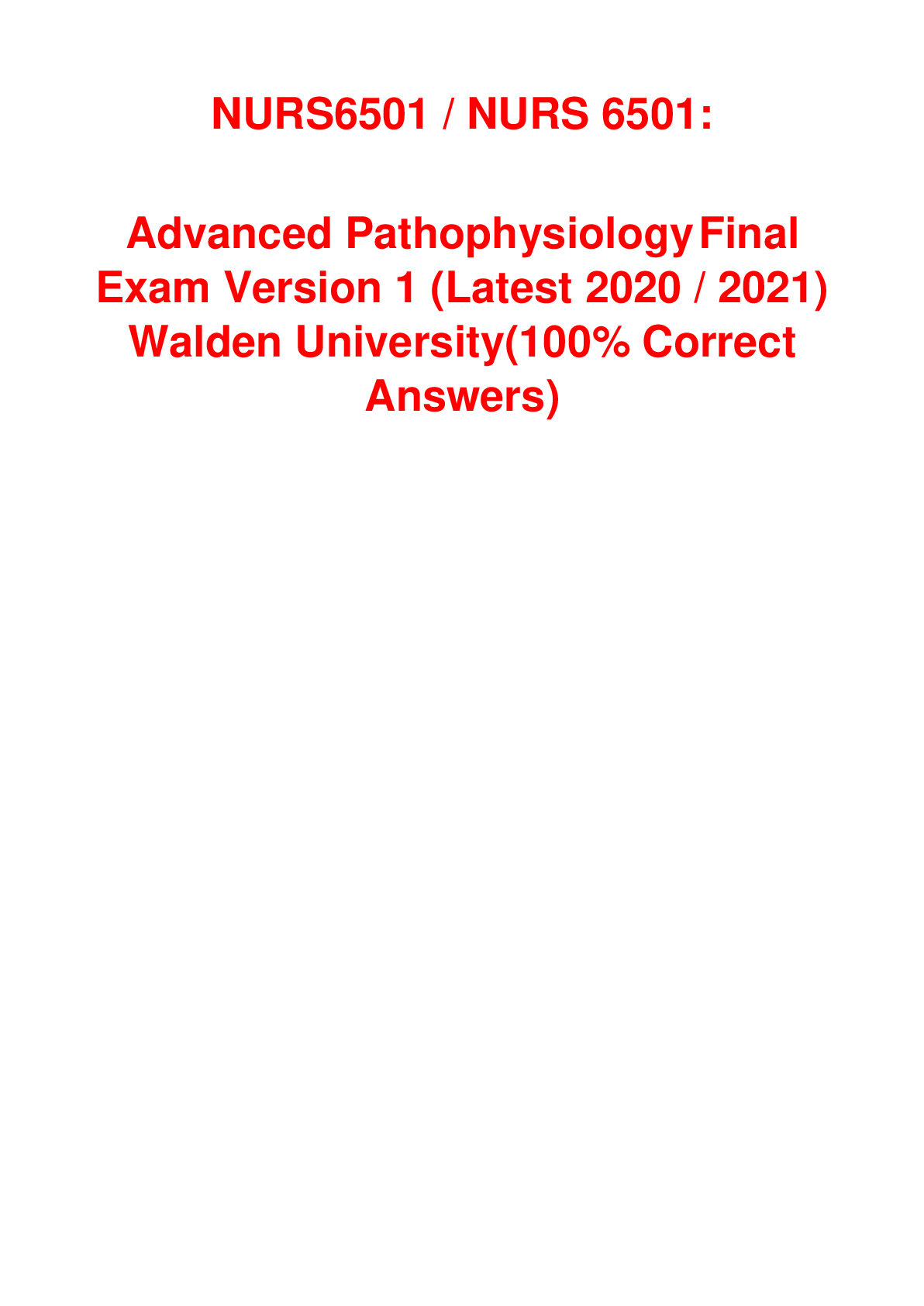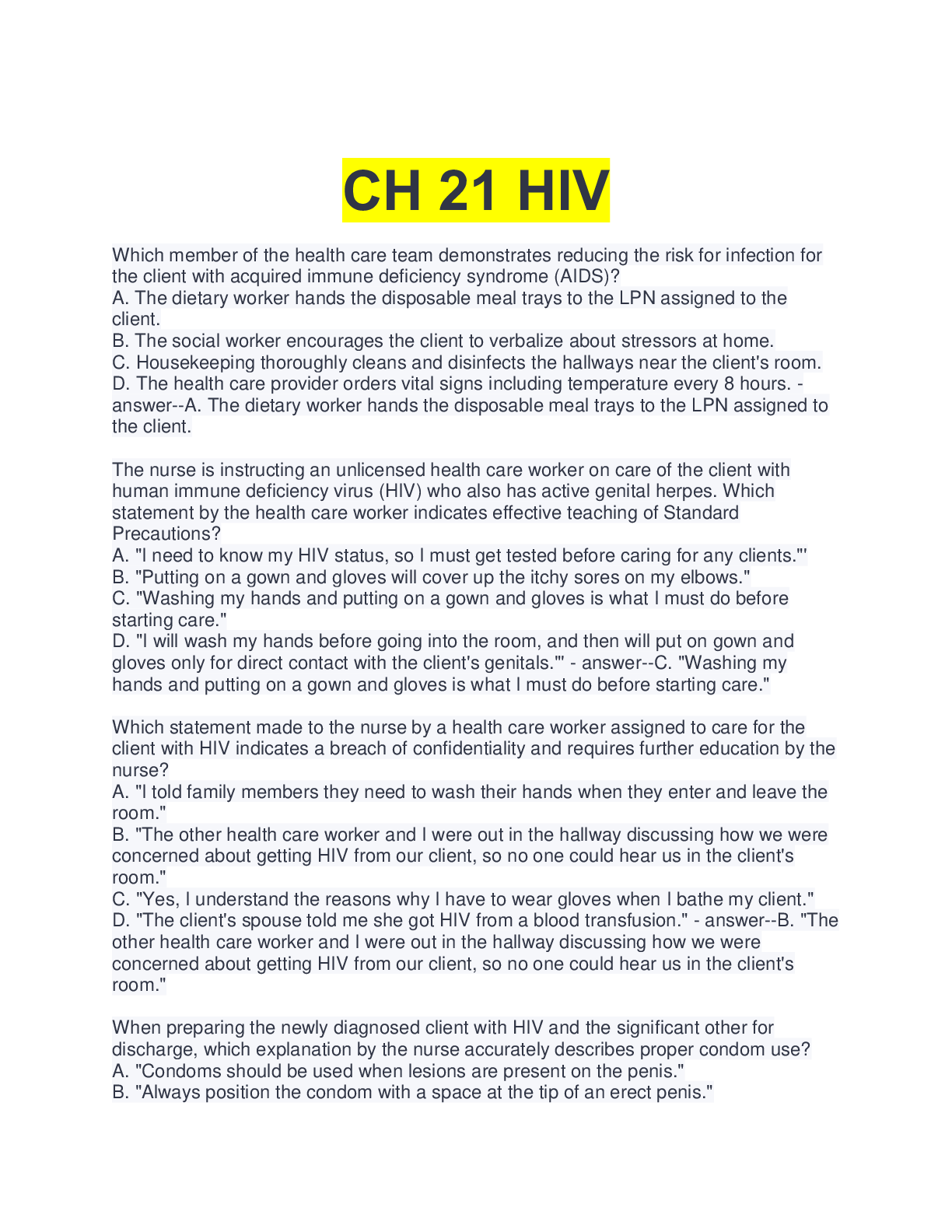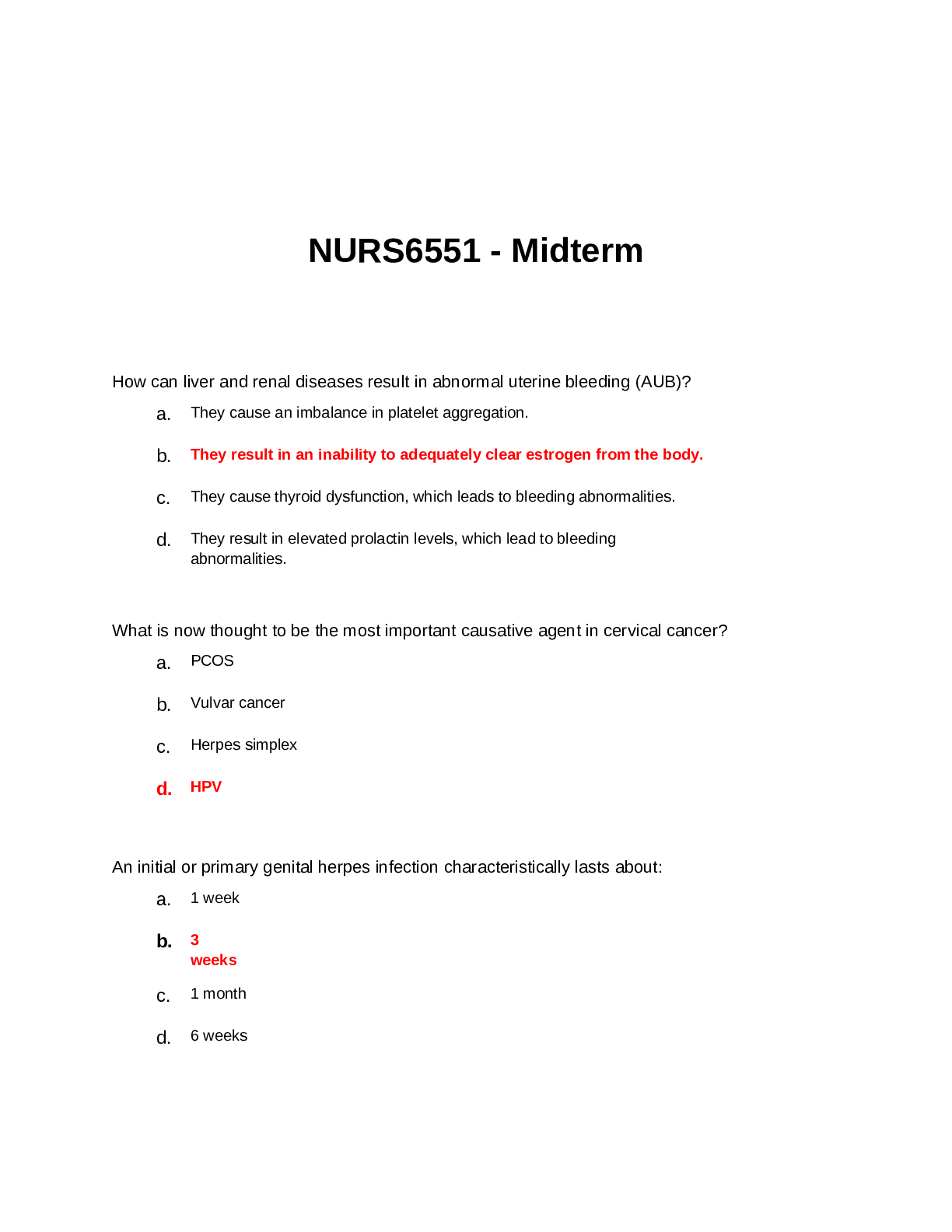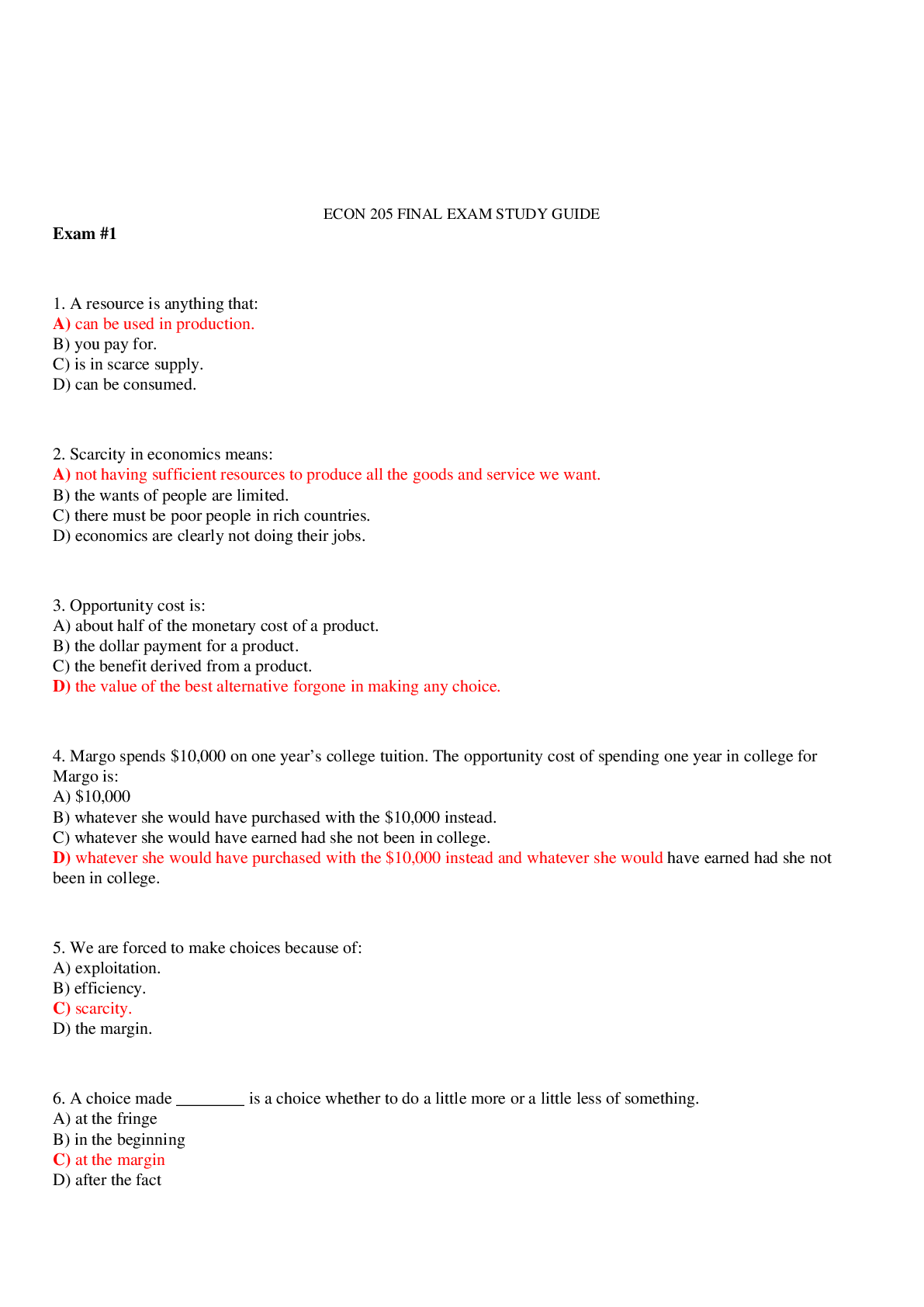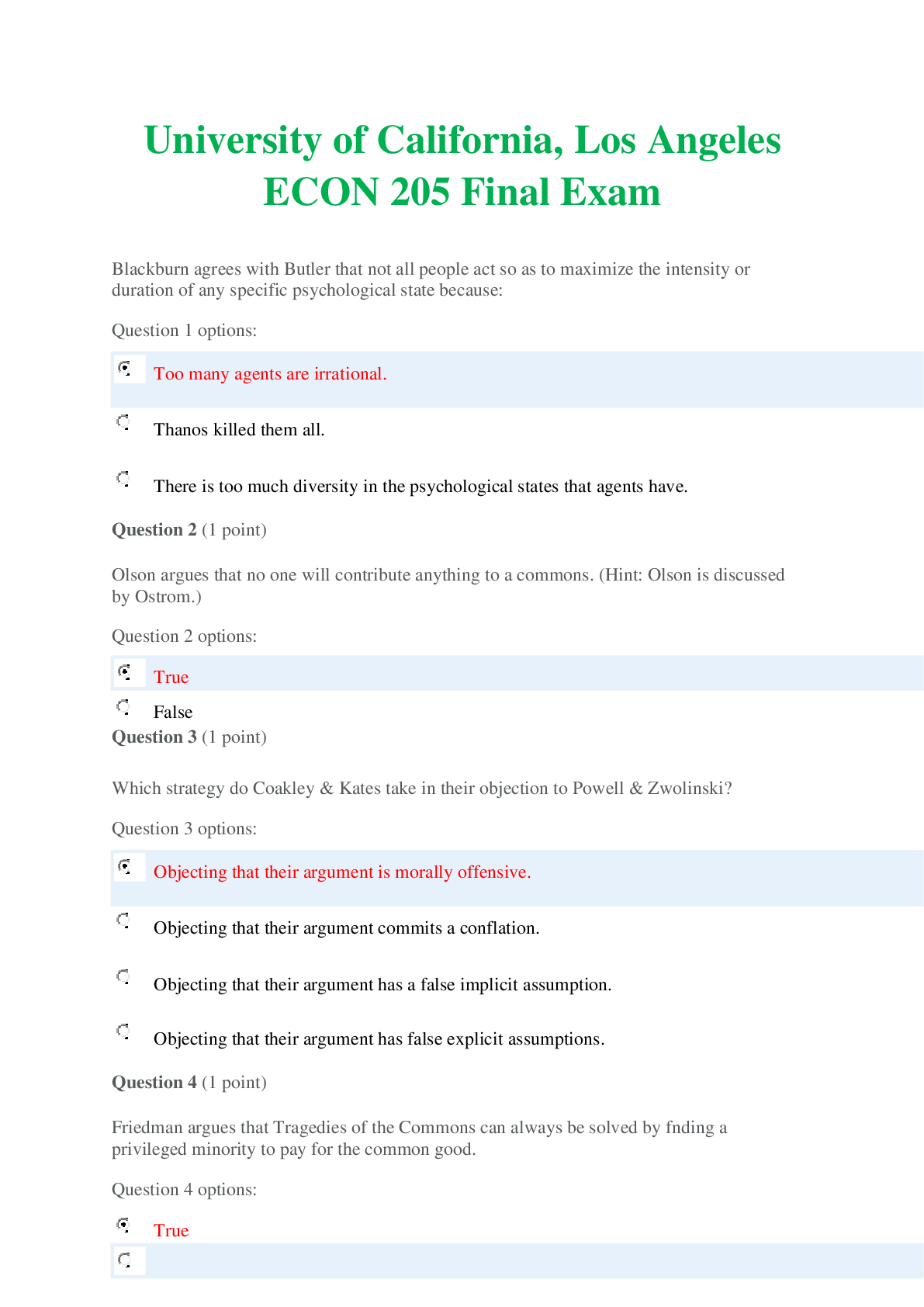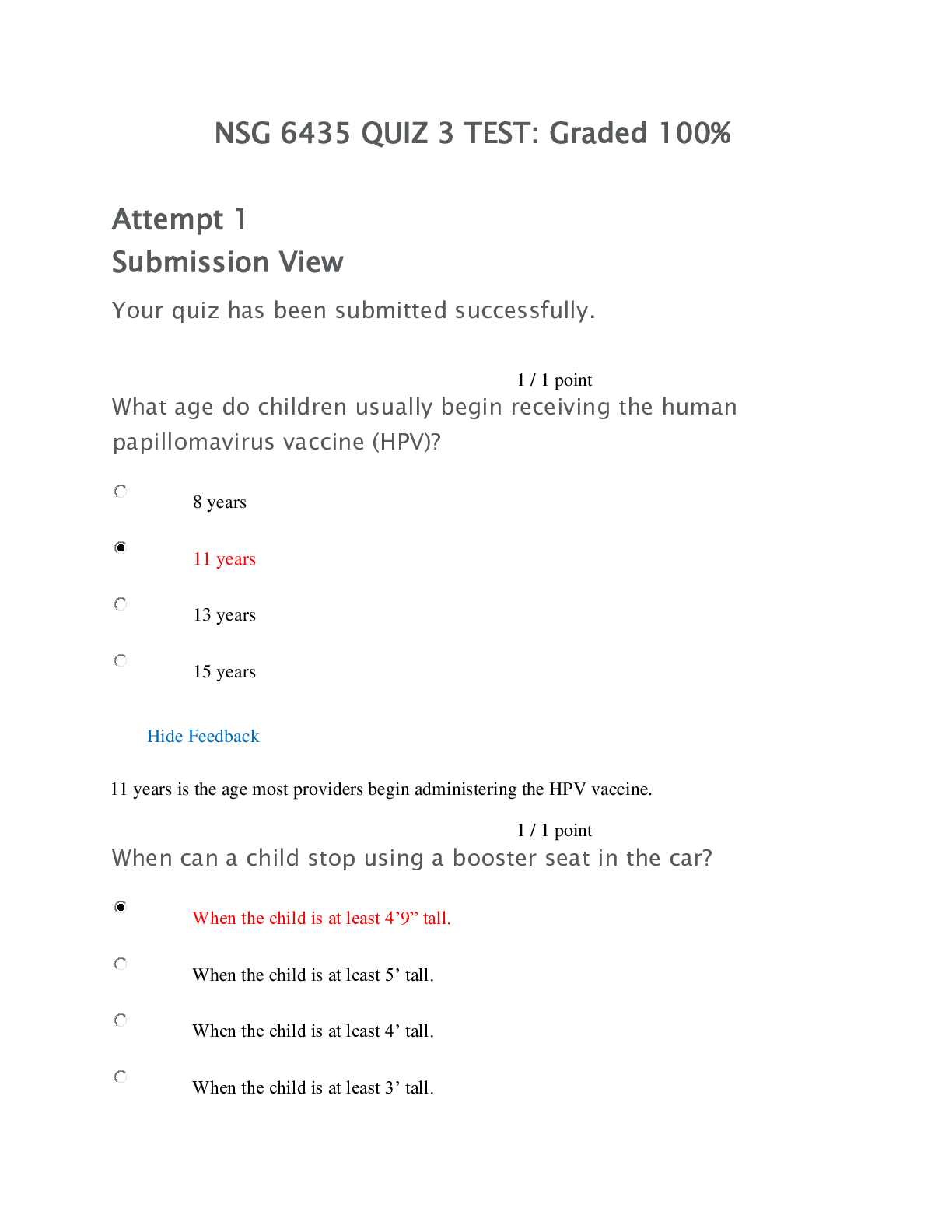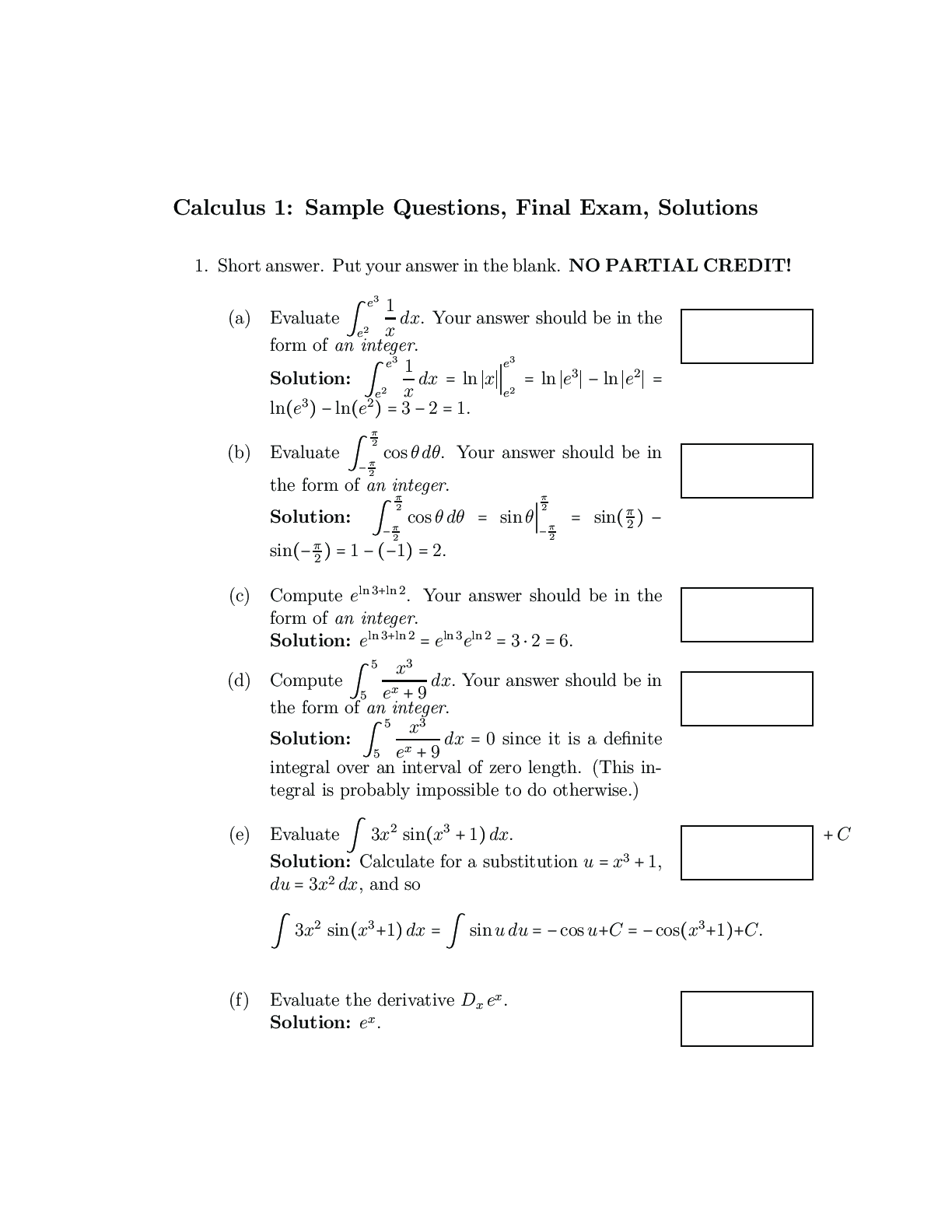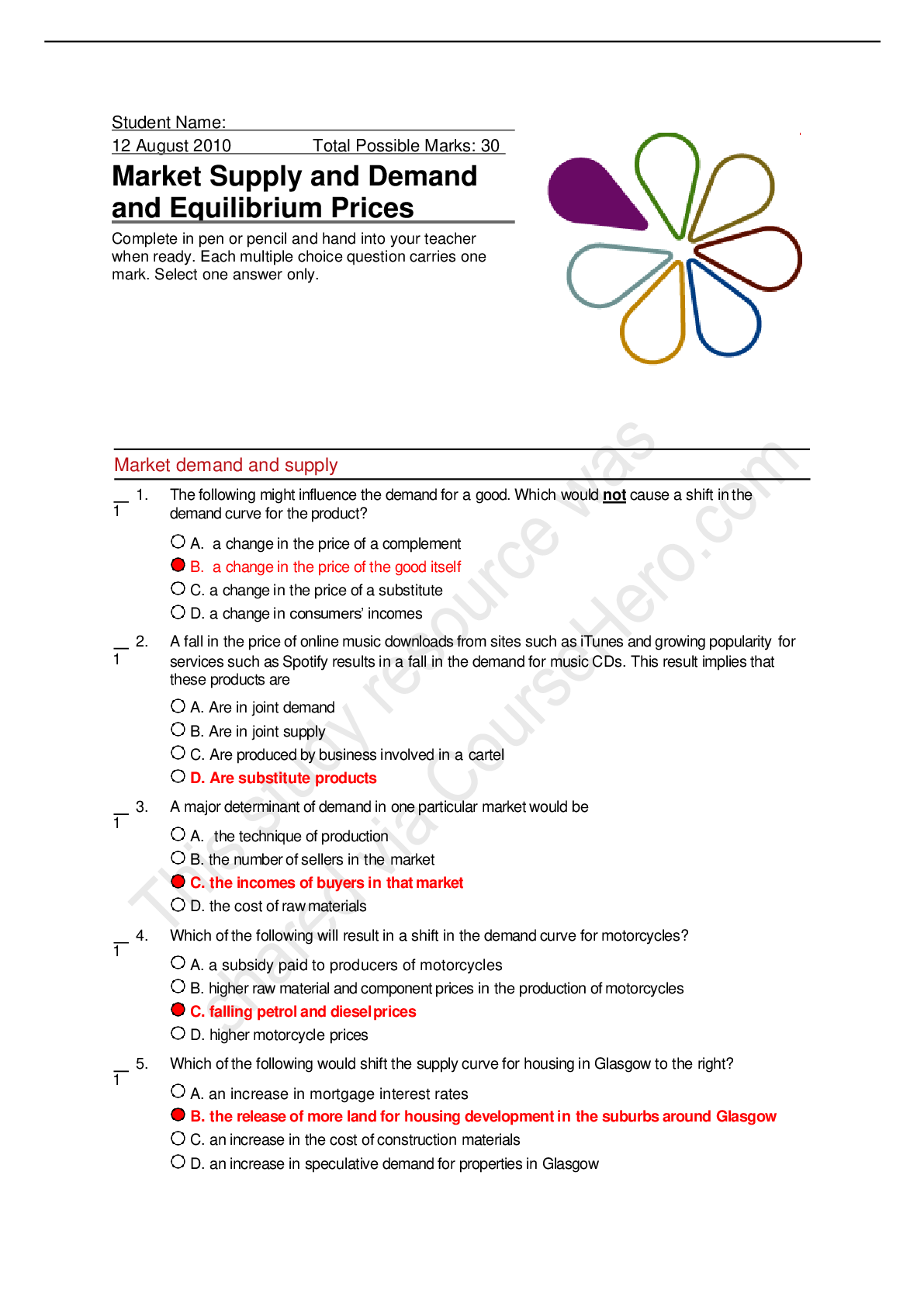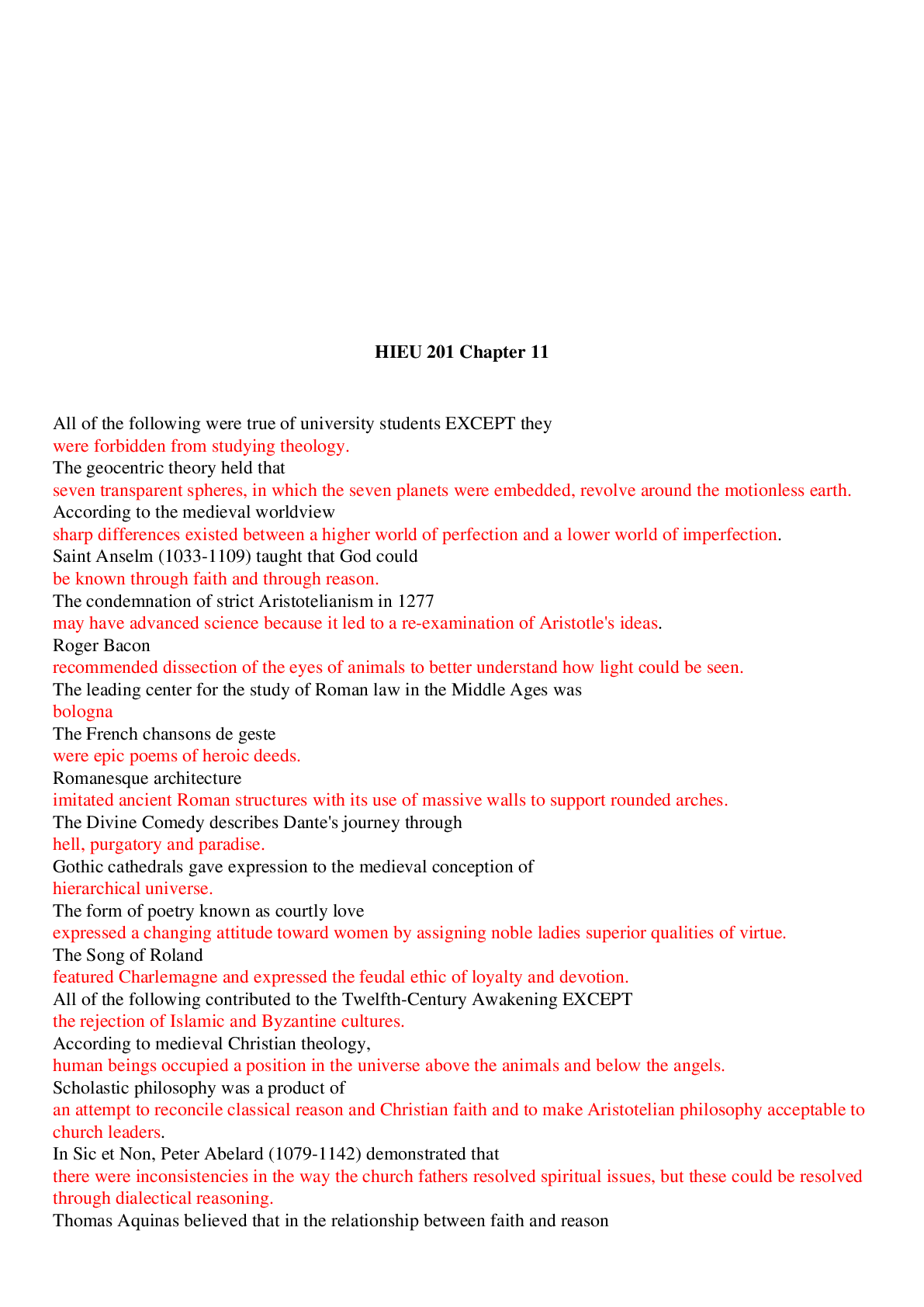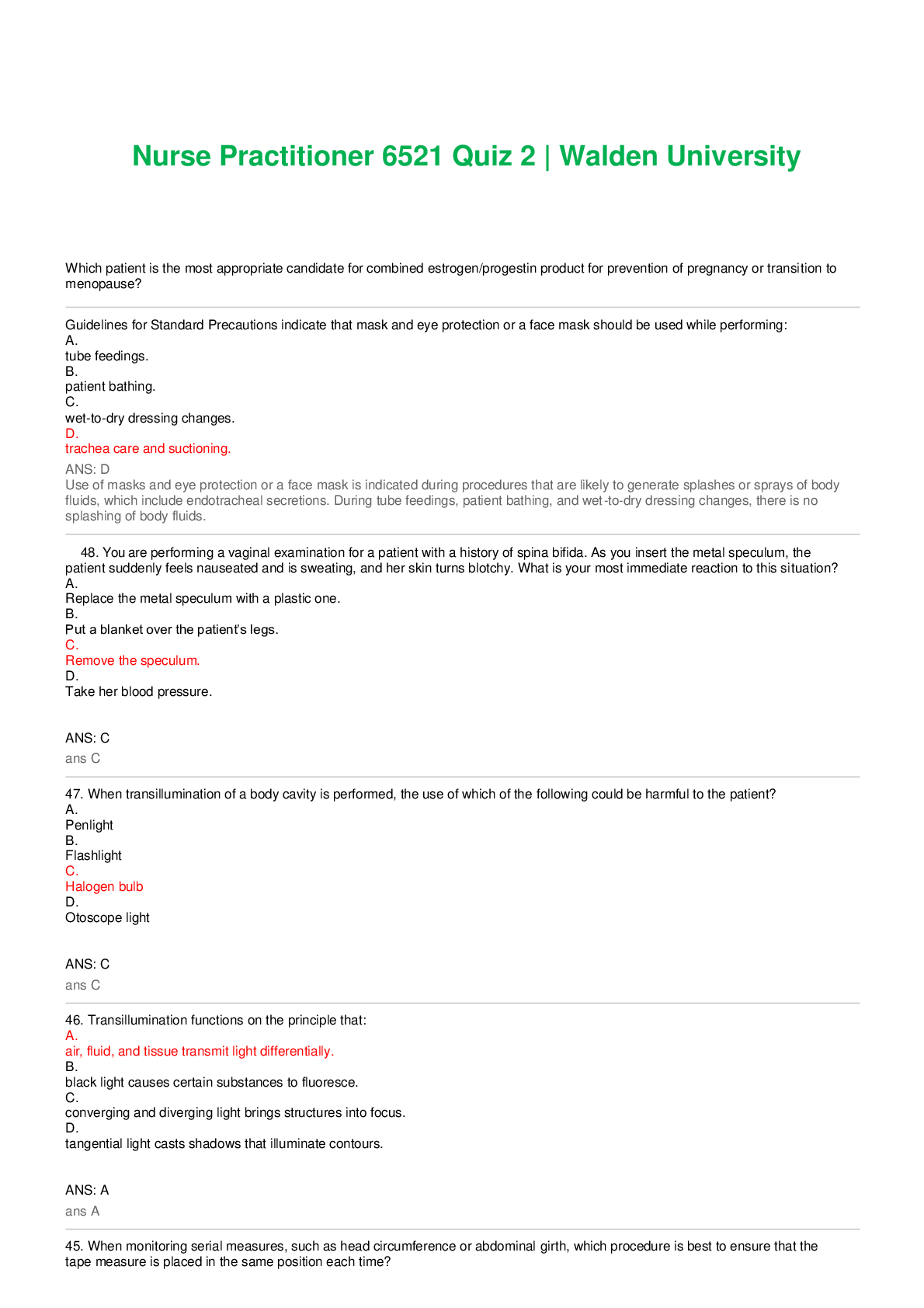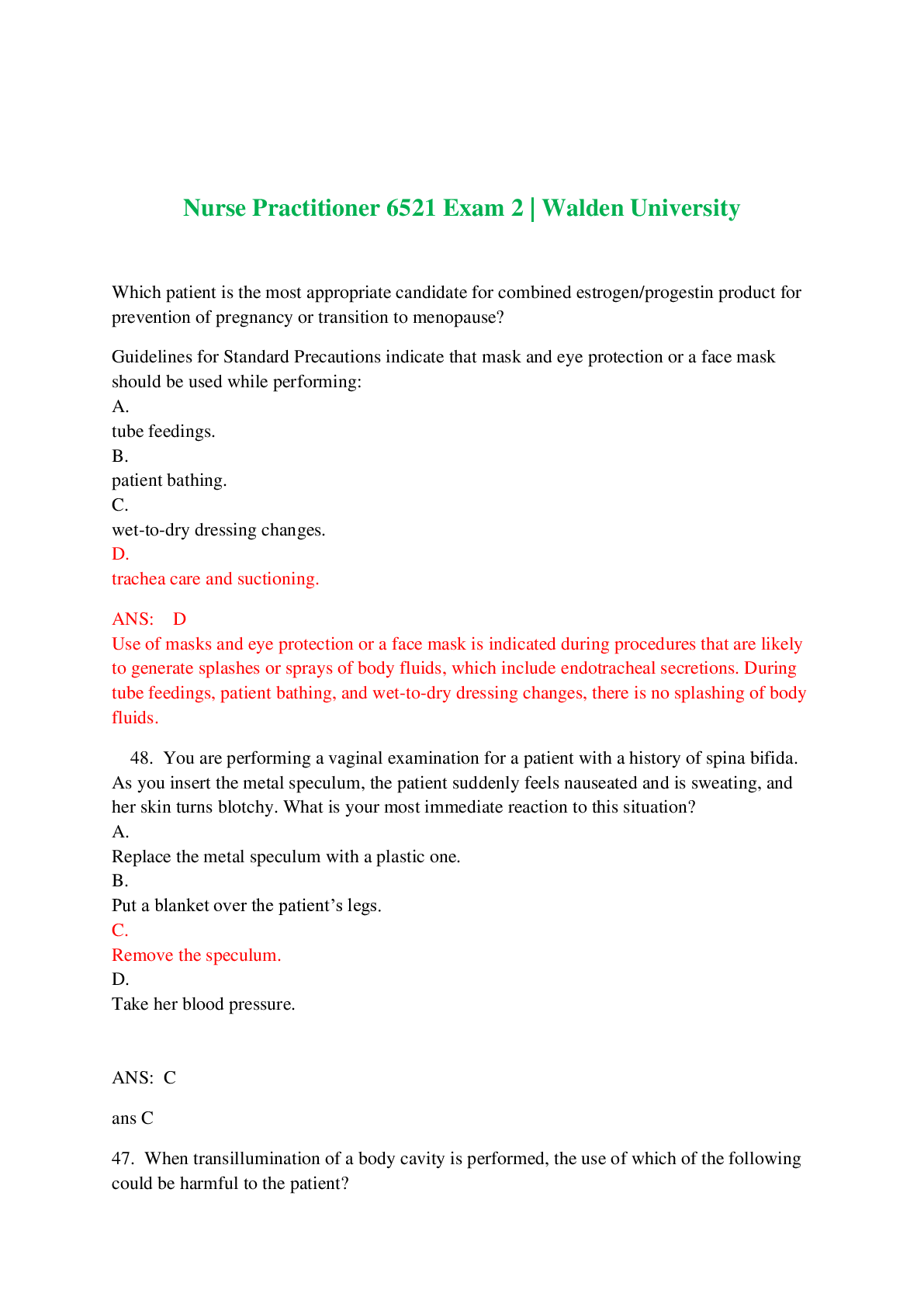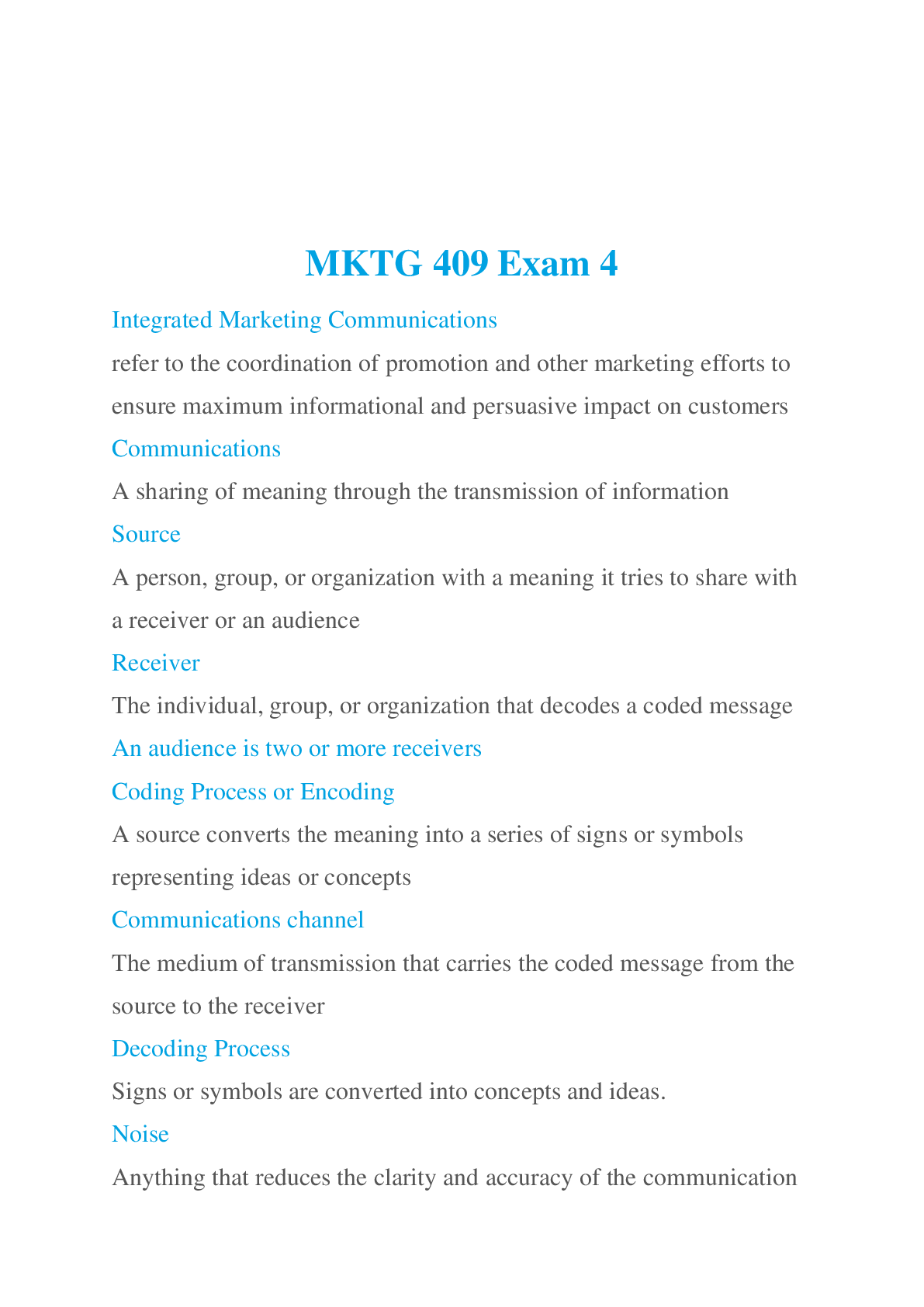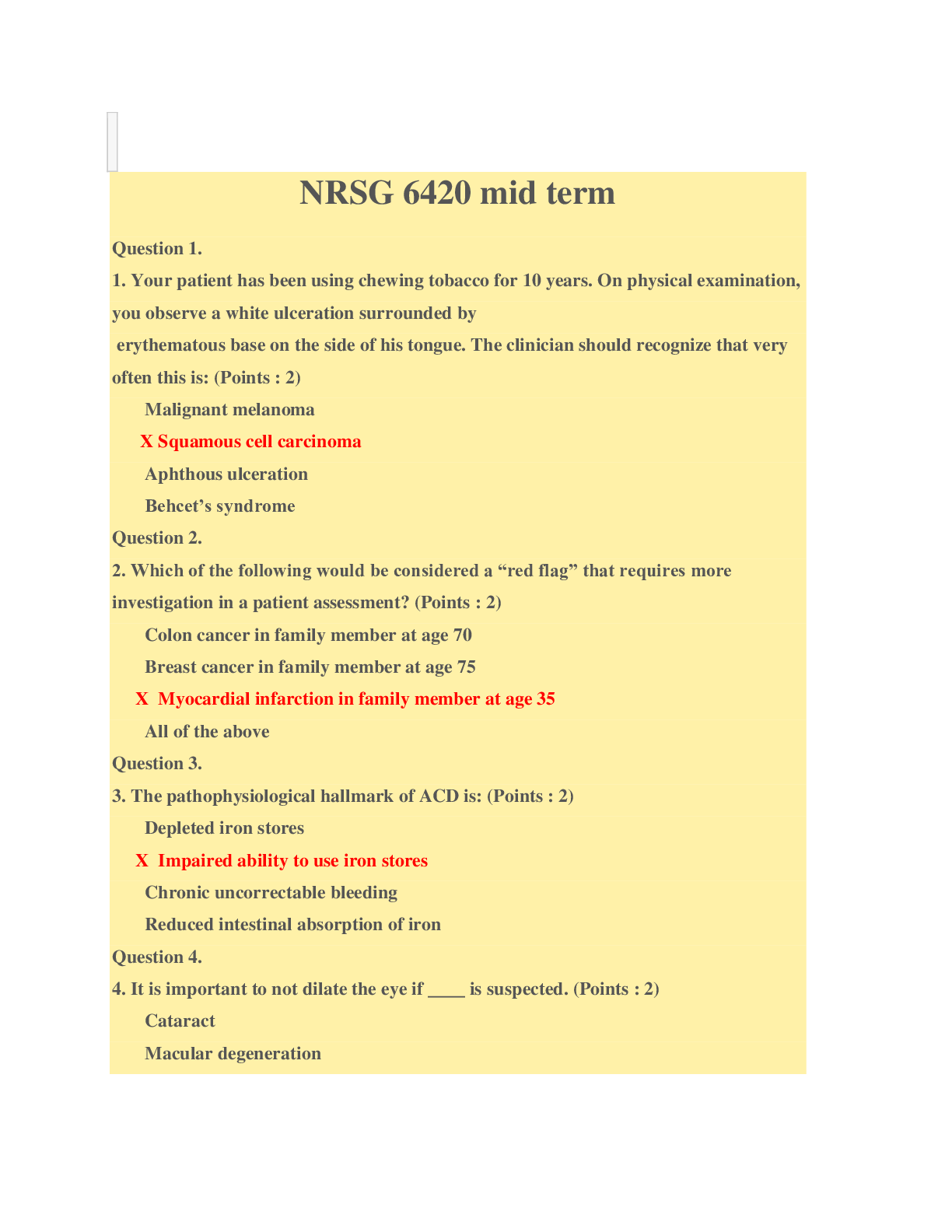Pathophysiology Definitions of terminologies
Document Content and Description Below
dura mater -correct answer--Outer layer of meninges, tough, fibrous, double layered. dural sinuses -correct answer--Formed by spits in dura mater. Collect venous blood and CSF for return to general... circulation. mediastinum (what is it) -correct answer--Area of thoracic cavity between lungs. Location of trachea, esophagus, heart & large vessels pericardial sac -correct answer--Fibrous sac, holds heart, double-walled, anchors heart to diaphragm. endocardium -correct answer--inner layer of heart, forms 4 heart valves septum in heart -correct answer--separtes L & R sides of heart SA node - other name -correct answer--pacemaker sinus rhythm -correct answer--basic rate of impulses generated by SA node (70 beats per minute) location of sinoatrial node -correct answer--right atrium Where does impulse go to after SA node -correct answer--Spreads through atrial conduction pathways, resulting in contraction of both atria AV node - what is it -correct answer--Atrioventricular node. Impulse arrives here after SA node sent it through atria AV node - where is it -correct answer--Floor of R atrium near septum. Is the only anatomical connection between atrial and ventricular portions of conduction system. AV bundle - other name -correct answer--Bundle of His - other name ECG - what does it do -correct answer--Records electrical changes sent by conduction impulses as picked up by electrodes apoptosis -correct answer--normal programmed cell death in tissues endogenous -correct answer--originating from within the body exogenous -correct answer--originating from outside the body gangrene -correct answer--necrotic tissue infected by bacteria hypoxia -correct answer--decreased or insufficient level of oxygen in the tissues iatrogenic -correct answer--caused by a treatment, procedure or error idiopathic -correct answer--no known cause ischemia -correct answer--decreased blood supply to an organ or tissue lysis -correct answer--destruction of a cell lysosomal enzymes -correct answer--released into tissues undergoing lysis; cause inflammation and damage to nearby cells and reduced function morphologic -correct answer--structural pathogenesis -correct answer--development of the disease or sequence of events involved in the tissue changes related to the specific disease process insidious -correct answer--Proceeding in a gradual, subtle way, with only vague or mild signs, but with harmful effects. Ex: "the xx effects of stress"; hepatitis subclinical -correct answer--pathologic changes occur but no obvious manifestations exhibited, perhaps because of great reserve capacity of some organs. Ex: kidney damage may progress to an advanced stage of renal failure before symptoms are manifested. [Show More]
Last updated: 2 years ago
Preview 1 out of 13 pages
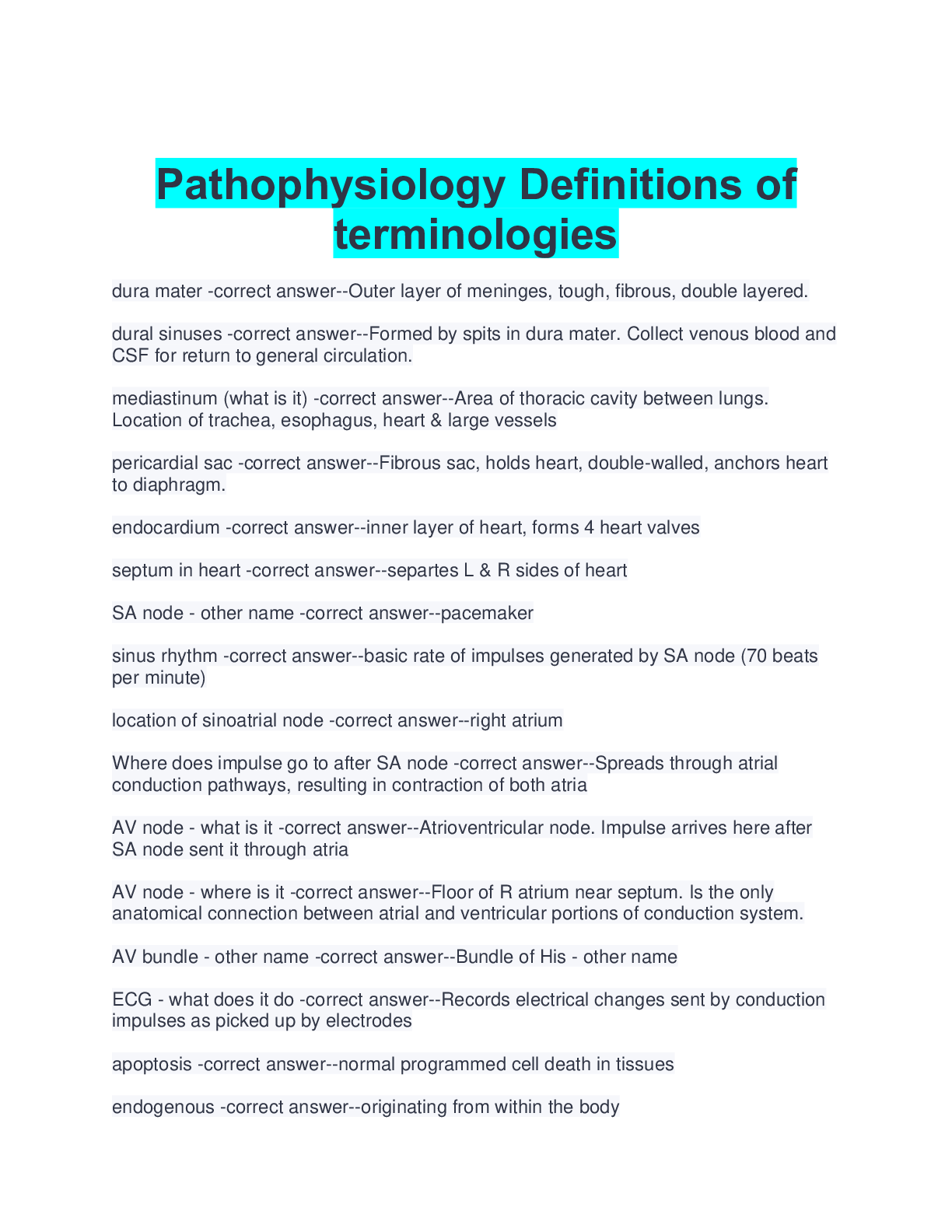
Buy this document to get the full access instantly
Instant Download Access after purchase
Buy NowInstant download
We Accept:

Reviews( 0 )
$15.00
Can't find what you want? Try our AI powered Search
Document information
Connected school, study & course
About the document
Uploaded On
Sep 21, 2022
Number of pages
13
Written in
Additional information
This document has been written for:
Uploaded
Sep 21, 2022
Downloads
0
Views
38

